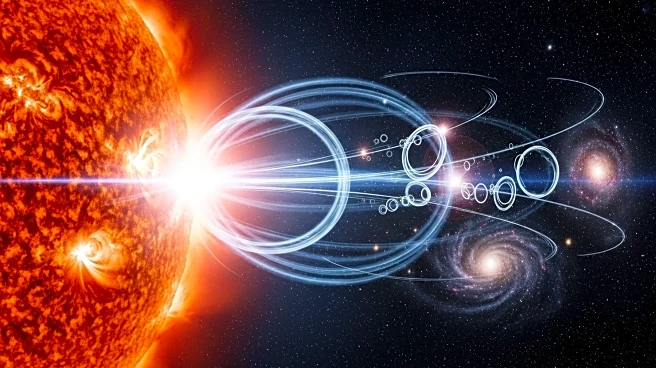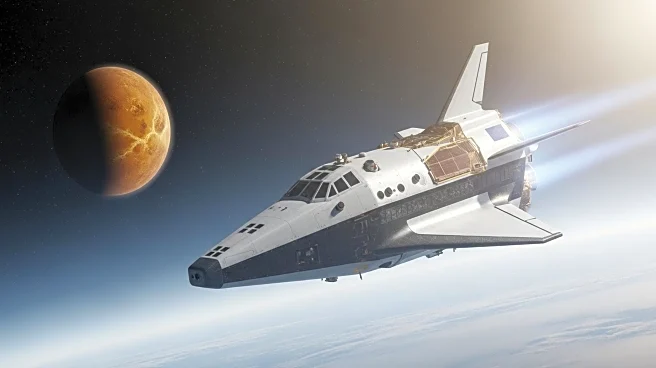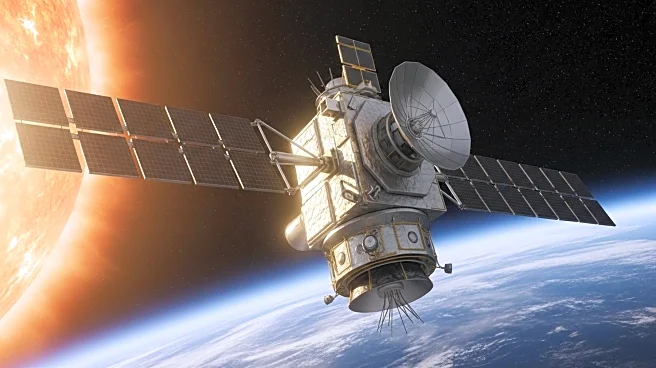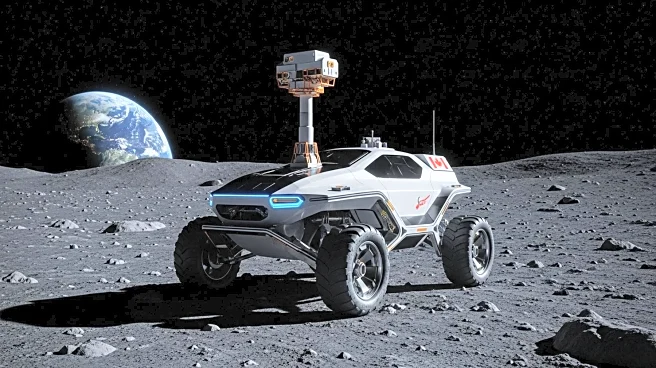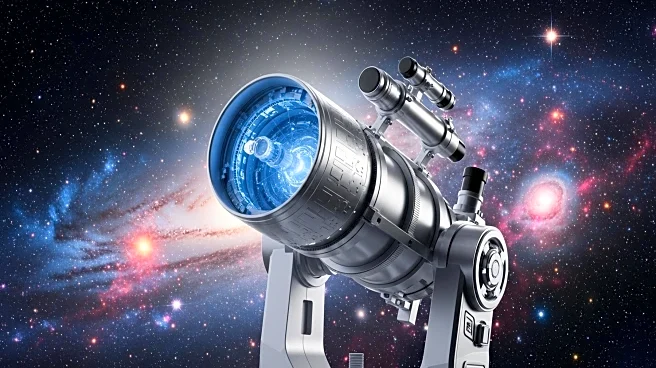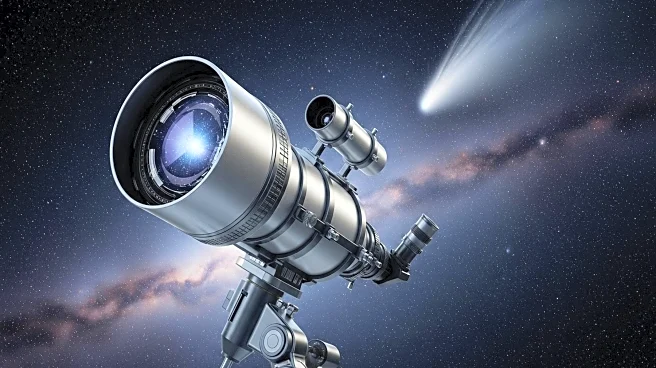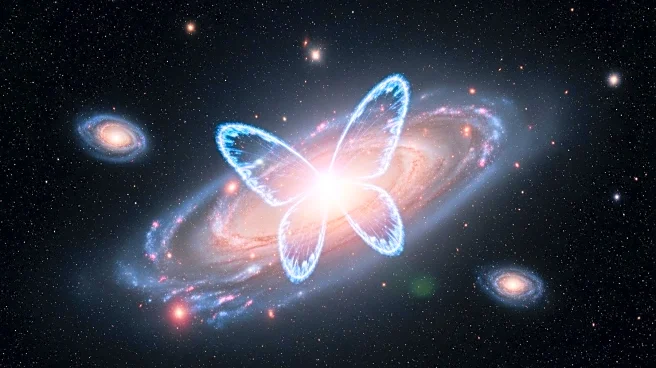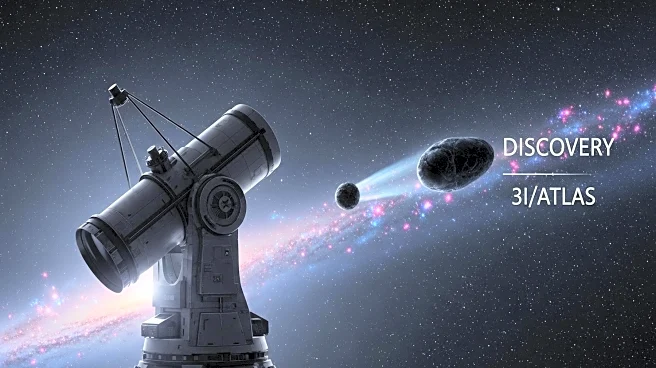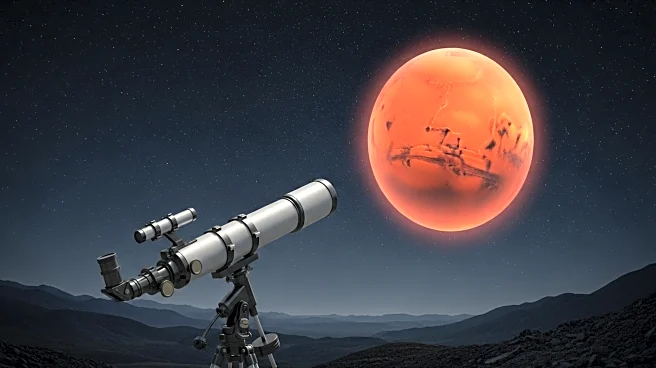What's Happening?
The European Space Agency (ESA) and NASA's Solar Orbiter spacecraft have identified the origins of Solar Energetic Electrons (SEEs) traveling at nearly the speed of light from the sun. These electrons originate from two types of solar outbursts: solar flares and coronal mass ejections (CMEs). The Solar Orbiter's observations have allowed researchers to distinguish between these two sources, providing insights into the physics of the sun. The study revealed that 'impulsive' particle events are linked to solar flares, while 'gradual' events are associated with CMEs. This discovery was made possible by observing hundreds of events at varying distances from the sun, allowing scientists to measure particles in their early state and accurately determine their origin.
Why It's Important?
Understanding the origins of SEEs is crucial for improving space weather predictions, which can impact spacecraft and technology on Earth. SEEs launched by CMEs are higher energy and can cause significant damage to technology, making it vital to distinguish between the two types of SEEs. This research enhances the ability to predict space weather events, potentially protecting astronauts and satellites from harmful solar particles. The collaboration between ESA and NASA demonstrates the power of international teamwork in advancing scientific knowledge and safeguarding technological assets.
What's Next?
Future missions, such as ESA's Smile mission in 2026 and the Vigil mission in 2031, aim to further study the solar wind and its interaction with Earth's magnetosphere. These missions will provide a better understanding of solar outbursts and improve space weather predictions. Vigil will focus on observing the sun's limb to detect potentially damaging solar events before they impact Earth, enhancing the ability to predict their power, direction, and potential impact.
Beyond the Headlines
The research highlights the importance of international collaboration in space exploration and scientific discovery. By combining expertise from European scientists and US colleagues, the study exemplifies how joint efforts can lead to significant advancements in understanding and predicting space weather phenomena.
